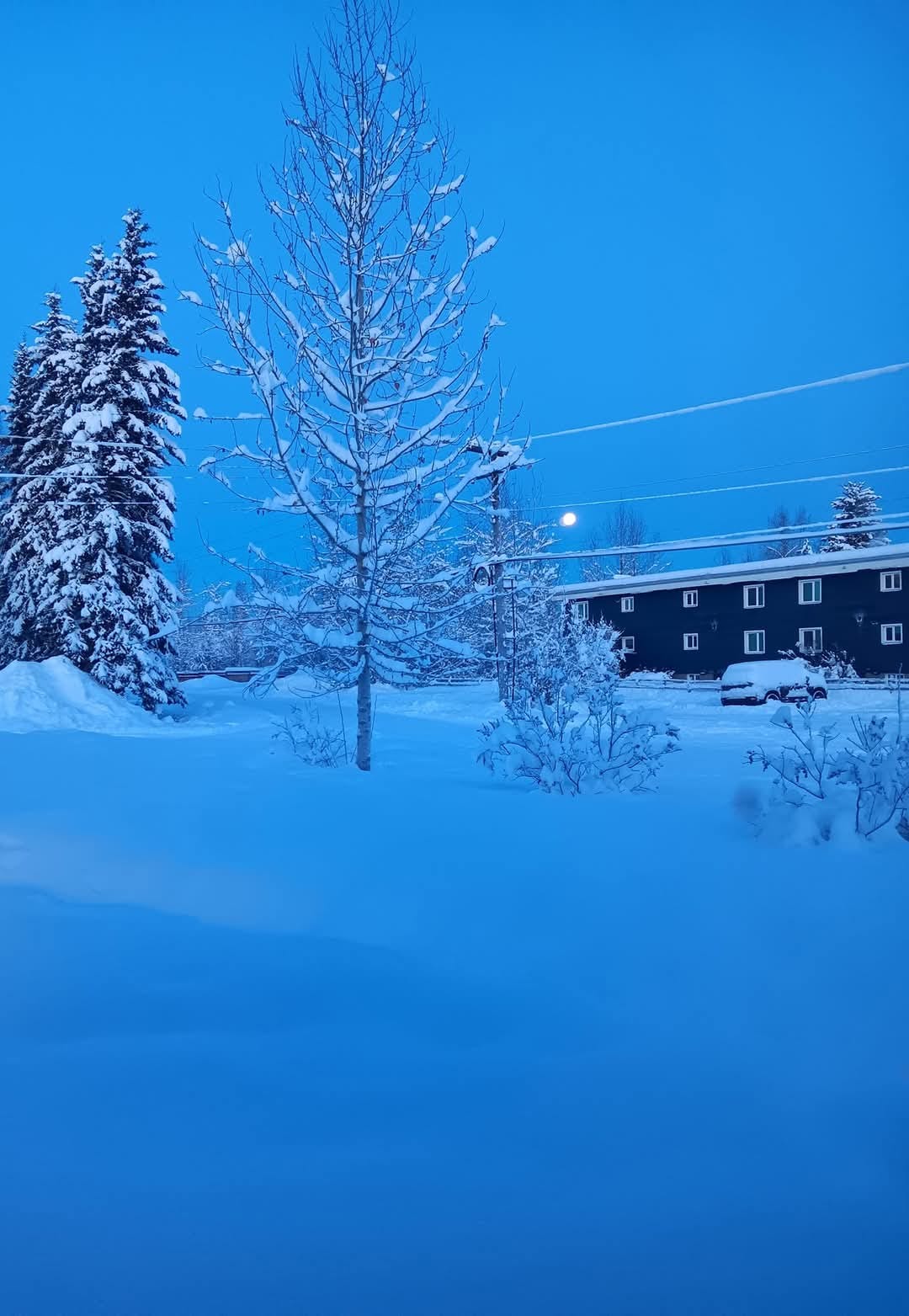Evening Contemplations: In the Blue Hour of Alaska
There is a profound mystery in how darkness falls differently here in the Arctic North. In most places, night arrives like a curtain - a gradual dimming, a fading to black. But in Alaska's winter twilight, darkness has a different quality altogether. It turns the world blue.
I've been watching this transmutation for hours now, how the air itself becomes thick with indigo. How it seeps into everything like water into silk, how it pools in the hollows between trees and gathers in the shadows of mountains. The snow receives this blueness like a secret being whispered, holding it close, multiplying it in millions of crystalline facets until the whole world seems carved from sapphire.
Here, in this space between day and night, time moves differently. It stretches like cold honey, each moment extending into infinity. The far off mountains drink the blue until they become shadows of themselves, until their edges blur into the deepening sky like wet ink bleeding across ancient parchment. Even my breath becomes blue in this light, hanging in the air like a ghost of summer clouds.
This is the hour when the ordinary world slips away, when everything familiar becomes strange and wonderful. The spruce trees no longer look like trees at all, but rather like sentinels carved from chunks of midnight, their branches heavy with accumulated twilight. The snow beneath them is no longer just frozen water - it has become the sky's reflection, a mirror to the infinite, capturing and holding every subtle gradation of blue until the ground and heavens seem to merge into one continuous dream.
What wisdom lies in this daily transformation? What truth hides in the way the light changes everything it touches? I think of the ancient philosophers who sought the unchanging essence of things, and I wonder if they ever considered that perhaps change itself is the essence. Perhaps the truth of snow isn't in its whiteness at all, but in its capacity to become blue, to become gold, to become silver under the moon. Perhaps the truth of everything lies not in what it is, but in what it can become.
The silence here has texture. It feels blue too - deep and velvet-soft against the skin. It fills the spaces between thoughts like water filling a pool, until even my mind begins to take on this twilight hue. My thoughts slow and deepen, becoming more like the drift of snowflakes than the usual rapid flutter of daily concerns.
The native Inuit peoples speak of sixty different kinds of snow, but surely there must be sixty different kinds of blue in this single evening. There's the sharp blue of fresh snow in shadow, the deeper blue of spruce boughs weighted with winter, the almost-black blue of the spaces between distant stars as they begin to appear. Each shade tells its own story, holds its own truth about the nature of light and darkness, about the way the world transforms itself when we're patient enough to watch.
In this blue twilight, everything becomes both more and less than what it was. Distance becomes fluid - mountains that seemed close in daylight now float like islands in an azure sea, while the nearby trees loom larger, their shadows stretching across the snow like fingers reaching for something just beyond grasp. The world feels both larger and more intimate, as if the blue hour has revealed hidden dimensions that exist alongside our ordinary reality.
As the blue deepens toward black, I think about how this moment will never come again exactly this way. Tomorrow's blue hour will paint the world with slightly different shades, will transform the landscape in subtly different ways. Yet there's something eternal in this changing light, something that speaks to the deepest parts of human consciousness. Perhaps that's why we're drawn to these in-between moments - they remind us that transformation isn't just possible, it's inevitable, and that there's profound beauty in impermanence.
The snow catches the last traces of light like a handful of scattered stars. Soon the blue will deepen into the black of true night, but for now, everything exists in this state of possibility, this moment of becoming. The world holds its breath in anticipation of darkness, and in this suspended moment, we can almost believe that anything is possible - that we too might transform as easily as snow takes on the colors of twilight, that we too might hold light within us long after the sun has gone.
In the end, perhaps this is what the blue hour teaches us: that beauty lies not in permanence but in transition, not in being but in becoming. That even the whitest snow can turn to sapphire, that even the most familiar world can become strange and wonderful, if only we have the patience to watch the light change, and the wisdom to recognize the miracle in transformation.





